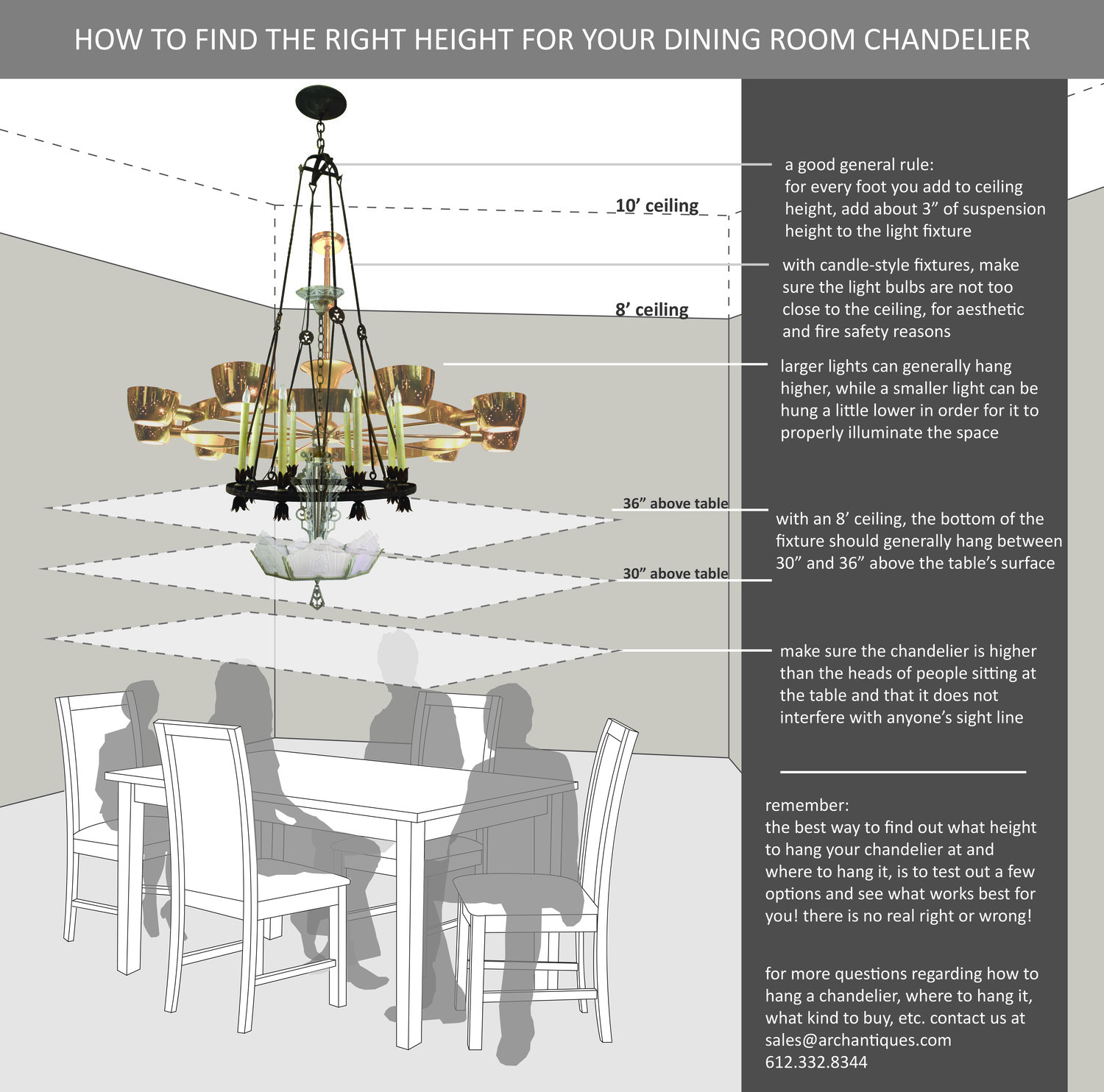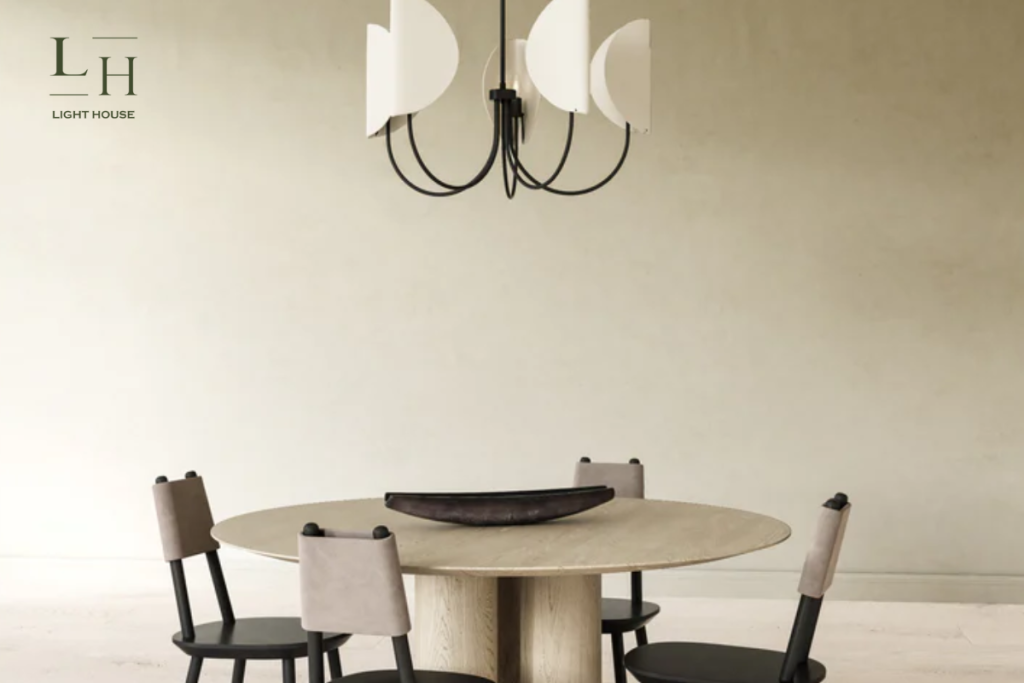Choosing the right height for your chandelier above a table might seem like a small detail, but it can change the whole look and feel of your room. If it’s too low, it can block views and feel cramped.
If it’s too high, it may not light your space properly or feel connected to your table. You want your chandelier to create the perfect balance—adding style, warmth, and the right amount of light. You’ll discover simple guidelines and expert tips to get that height just right, so your chandelier shines exactly how it should.
Keep reading, and you’ll never have to wonder about chandelier placement again.

Credit: www.reddit.com
Ideal Height For Chandeliers
Finding the ideal height for a chandelier above your table is key to balancing style and function. Too low, and the fixture might block views or create awkward spaces. Too high, and it could lose its visual impact and fail to provide enough light.
Standard Height Measurements
The most common guideline suggests hanging a chandelier about 30 to 36 inches above the table surface. This range works well for most ceiling heights and table sizes, offering enough clearance without overwhelming the space.
If you have a typical 8-foot ceiling, sticking to this range ensures the chandelier doesn’t hang too low or feel disconnected from the table below. But remember, this is a starting point—not a strict rule.
Adjusting For Ceiling Height
Higher ceilings call for chandeliers to be hung a bit higher. A good rule is to add about 3 inches for every additional foot of ceiling height over 8 feet.
For example, with a 10-foot ceiling, aim for 36 to 42 inches above the table. This prevents the chandelier from feeling lost in tall rooms and keeps the lighting cozy and focused.
Are you dealing with a low ceiling? Then you might need a flush mount or a smaller chandelier to avoid head bumps and keep your space comfortable.
Considering Table Size And Shape
Your table’s dimensions affect where the chandelier should hang. Larger tables need wider and possibly lower-hung chandeliers to distribute light evenly.
For rectangular tables, consider a fixture that runs along the length, hanging it slightly lower to create intimacy. Round tables often benefit from a centered chandelier hung at the standard 30-36 inch height.
Think about how your chandelier interacts with the table’s edges. Does it light the entire surface? Does it leave shadows? Adjusting height based on table shape helps you answer these questions.

Credit: freshcareerstart.com
Factors Affecting Chandelier Height
Choosing the right height for a chandelier above a table depends on several important factors. These factors help balance light, style, and function. Understanding them ensures the chandelier looks good and works well in the space.
Room Function And Usage
The purpose of the room affects chandelier height choices. Dining rooms need enough light for meals and gatherings. In living rooms, the chandelier might be more decorative. Consider how often the space is used and for what activities. This guides the ideal hanging height to avoid glare or shadows.
Lighting Intensity And Fixture Size
The brightness of the chandelier influences its height. Larger fixtures need more space to avoid overpowering the room. Smaller chandeliers can hang lower without blocking views. Light intensity also matters. Bright lights may need to hang higher to soften illumination on the table.
Personal Style And Aesthetic
Your taste affects chandelier placement. Some prefer a bold look with low-hanging fixtures. Others want subtle, high-set lighting. The design of the chandelier and room style should match. The height should enhance the overall decor without feeling out of place.
Measuring And Installing
Getting the height of your chandelier just right makes all the difference in your dining space. It’s about balance—too low, and it blocks views; too high, and it loses impact. Measuring and installing your chandelier carefully ensures it enhances your table without causing any hassle or hazards.
Tools Needed For Measurement
Before you start, gather the right tools to make accurate measurements easy. A reliable tape measure is essential for checking the height from the floor to the ceiling and from the table surface up. A ladder or step stool will help you reach the ceiling safely during installation.
- Measuring tape (preferably metal for accuracy)
- Step ladder or sturdy stool
- Level tool to ensure the chandelier hangs straight
- Pencil or masking tape to mark measurement points
- Drill and screwdriver for mounting
Step-by-step Installation Tips
Start by measuring the height of your table. A good rule of thumb is to hang the chandelier about 30 to 36 inches above the tabletop. Mark this height on the ceiling using your pencil or tape as a guide.
Next, switch off the power to avoid accidents. Use your ladder to reach the ceiling fixture and remove the old light if there is one. Attach the mounting bracket securely to the ceiling junction box.
Wire the chandelier according to the manufacturer’s instructions, matching wire colors carefully. Once wired, hang the chandelier on the bracket and adjust its height to your marked point. Use a level to check that it’s hanging evenly before tightening all screws.
Common Mistakes To Avoid
Don’t guess the height—improper measurement is the biggest mistake and can ruin the room’s look. Avoid hanging the chandelier too low, which can block sightlines and cause head bumps. On the other hand, hanging it too high diminishes its visual effect and may not provide enough light.
Failing to turn off power during installation is risky and can cause injury or damage. Also, don’t skip using a level; a crooked chandelier looks sloppy and distracts from your decor. Lastly, make sure the mounting bracket matches your chandelier’s weight to prevent it from falling.
Have you ever installed a chandelier that looked off? What did you learn from that experience? Taking your time measuring and following these tips will help your lighting look perfect and safe.
Special Situations
When hanging a chandelier, special situations often arise. These situations require careful consideration to ensure perfect placement. Let’s explore these scenarios and how to address them.
High Or Vaulted Ceilings
High or vaulted ceilings can make chandelier placement challenging. Hang the chandelier a bit lower than usual. This ensures it doesn’t feel lost in the vast space. Aim for 30 to 36 inches above the table. If ceilings are exceptionally high, consider a longer chain or rod. This keeps the chandelier within view and adds elegance to the room.
Long Or Narrow Dining Tables
Long or narrow tables need a different approach. A single chandelier might not suffice. Use an elongated fixture or multiple smaller chandeliers. This ensures even lighting across the table. Hang each piece at equal height for symmetry. This creates a balanced and inviting dining atmosphere.
Multiple Chandeliers In One Room
Using multiple chandeliers can enhance a room’s appeal. They should be evenly spaced for a cohesive look. Maintain consistent height to avoid visual clutter. Choose chandeliers that complement each other in style. This ensures harmony in the room’s design. Multiple chandeliers add depth and sophistication to any space.
Alternative Lighting Options
Choosing the right lighting for your dining area goes beyond just picking a chandelier and deciding its height above the table. Alternative lighting options can enhance the space’s mood and functionality. They offer flexibility and can complement or replace traditional chandeliers based on your style and needs.
Pendant Lights Vs. Chandeliers
Pendant lights tend to be smaller and more focused, making them perfect if you want direct light over your table without overwhelming the space. They come in various shapes and sizes, so you can mix and match several pendants for a modern look. Chandeliers usually act as a centerpiece, adding elegance and spreading light more evenly.
If your room is small or you prefer a minimalist vibe, pendant lights might suit your style better. But if you want a statement piece that draws attention, a chandelier works well. Ask yourself, do you want the light to blend in or stand out?
Layered Lighting Strategies
Relying on a single light source often leaves your dining area feeling flat or unevenly lit. Layered lighting uses multiple light types to create depth and balance. Combine ambient lighting (like ceiling fixtures), task lighting (such as table lamps or sconces), and accent lighting (spotlights or candles) to make your space versatile.
Try dimmable lights or adjustable fixtures to switch between bright meals and cozy dinners. This approach helps you control the atmosphere and enhances both function and style. How can you mix different lights to suit your daily routines?
Dimmers And Light Controls
Dimmers add an instant upgrade to any lighting setup by allowing you to adjust brightness with ease. Installing dimmers with your chandelier or pendant lights means you can create the perfect mood for every occasion. From bright family dinners to intimate evenings, you hold the power over your room’s ambiance.
Modern smart controls take this a step further, letting you change lighting settings from your phone or with voice commands. Have you experimented with dimmers to see how different light levels affect your dining experience? It might surprise you how much light control impacts comfort and style.

Credit: www.youtube.com
Frequently Asked Questions
How High Should A Chandelier Hang Above A Dining Table?
A chandelier should hang 30 to 36 inches above the dining table surface. This height balances visibility and lighting. It avoids glare and keeps the fixture proportional to the table size. Adjust slightly for ceiling height and chandelier size.
What Affects Chandelier Height Above A Table?
Chandelier height depends on ceiling height, table size, and room scale. Higher ceilings allow chandeliers to hang slightly higher. Larger tables need larger or multiple fixtures for balance. Room style and chandelier design also influence the optimal height.
Can Chandelier Height Be Adjusted For Different Table Sizes?
Yes, chandelier height can be adjusted based on table size. For smaller tables, hang the chandelier closer to maintain intimacy. Larger tables require a higher or wider fixture to ensure even lighting and proportional aesthetics.
Why Is Chandelier Height Important Above A Table?
Proper chandelier height ensures adequate lighting and visual comfort. It prevents glare and shadows on the table surface. The right height enhances room ambiance and maintains a balanced look in the dining area.
Conclusion
Choosing the right height for a chandelier makes your room look better. It helps light the table well without blocking views. Usually, hanging it about 30 to 36 inches above the table works best. This keeps the space comfortable and stylish.
Remember, a good height suits the room size and ceiling height. Take time to measure and adjust before hanging. The right chandelier height creates a warm and inviting place for meals and talks. Simple steps lead to a bright, balanced room everyone will enjoy.





